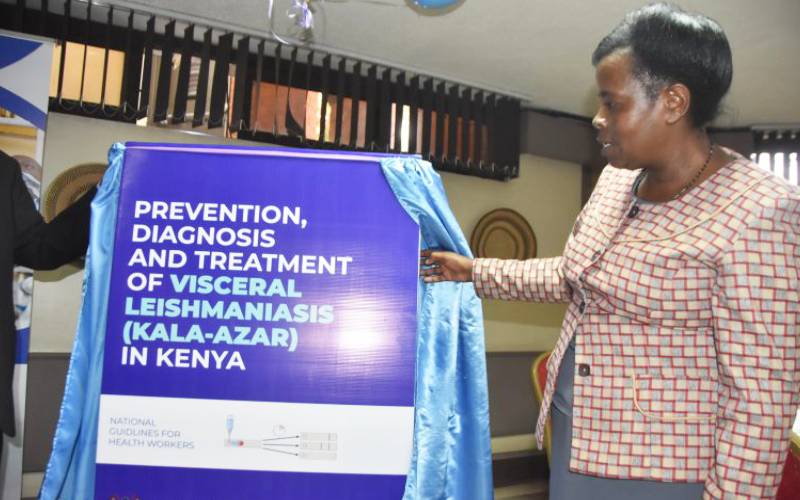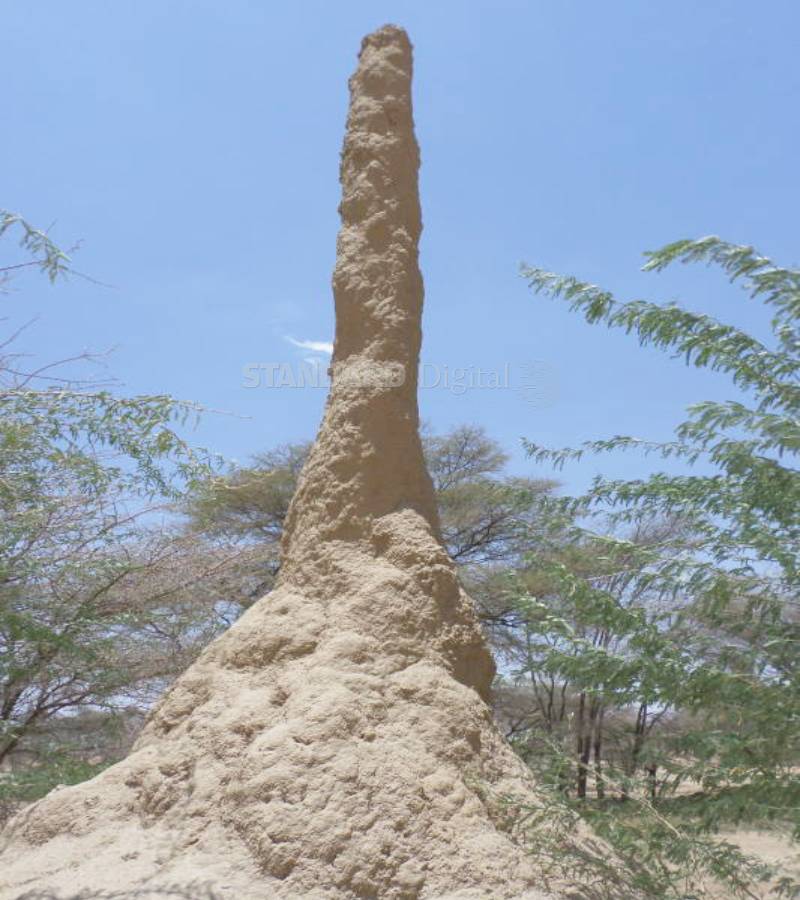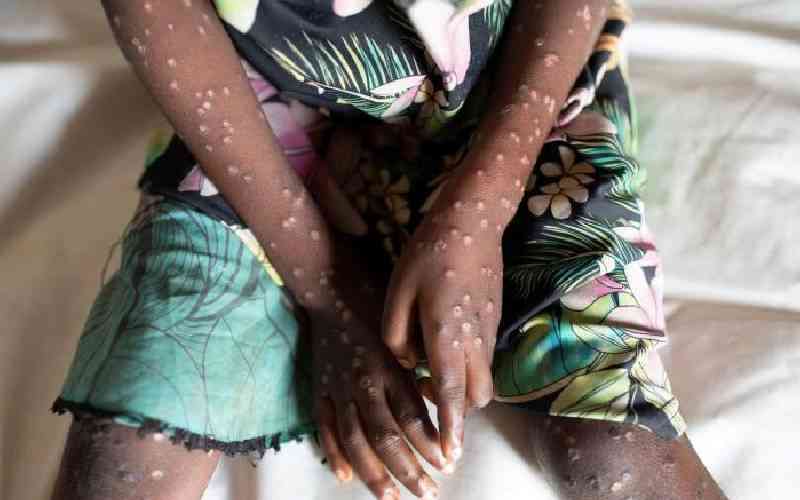
Head of Quality Assurance, Standards and Regulation Dr Anne Wamai launches guidelines for Kal-azar in February 2018. [Courtesy, MoH]
As the government strives to ensure quality healthcare for all, the situation in Marsabit County is wanting.
Since 2014, close to 100 Kala-azar patients have died due to poor drug administration, a matter county health officials deny.
There's a concern that many Kala-azar patients in Marsabit have died due to drug-related toxicities as a result of improper drug administration, with residents calling for an alternative treatment centre.
All had similar complications -- liver, kidney and bone marrow-related failures.
While some have received help at the Kenyatta National Hospital with support from Drugs and Neglected Diseases Initiative (DNDi) and Kemri, those who do not, end up losing their lives.
Clinical officer and social activist Adhi Bino told Standard Digital that Kala-azar symptoms are related to bone marrow and speen enlargement, not liver and kidney failure.
On the situation in Marsabit, she says "The patients have normal parameters at start of treatment but die as they get drugs."
The latest victim, Guyo Bagajo, died on December 26 aged 27. He left behind a widow and two children.
"They develop kidney and liver failure as high as 10 fold, develop uraemia, vomit blood and slip into coma then die."
Health workers at Marsabit County Hospital do not allegedly monitor blood, kidney and liver, leading to the high number of deaths.
"Patients are given bolus injections instead of drug infusions. They don't monitor as is stipulated in the guidelines," Bino added.
But County Health executive Jama Wolde denied there are cases of negligence in the hospital.
He admitted that there are deaths resulting from Kala-azar, but said it has little to do with the resources at the county hospital.
Wolde's sentiments were echoed by Health director Dr Adano Kochi, who said the doctors and nurses at Marsabit County Hospital adhere to the reagent rules.
"They offer the recommended treatment, but reactions are expected," he added.
Kochi has not received any formal complaints on negligence.
However, he agreed that an alternative Kala-azar centre dedicated to patients would be ideal as the county receives many patients going by the huge population.
The disease is the second-largest parasitic killer in the world, after malaria. It is responsible for an estimated 20,000 to 30,000 deaths each year worldwide.
The parasite migrates to the internal organs such as the liver, spleen and bone marrow. If left untreated, it will almost always result in death.
The signs and symptoms include fever, weight loss, fatigue, anaemia, and substantial swelling of the liver and spleen.
Health workers opted to take patients to the Laisamis Sub County Hospital, but due to the influx of patients, the facility ran out of reagents and medicine.
Bino further attributed the high number of Kala-azar deaths to tribal clashes.
"Health services have been affected by the clashes. There is a spillover effect where poor Gabra and Rendille patients are neglected when it comes to Kalaazar management."
Following the clashes, many cannot access Laisamis and end up at Marsabit hospital.
In April about 15 patients died at Marsabit Hospital during a Kala-azar outbreak.
Wolde said between March and April 44 people from Log logo, Kor and Laisamis were admitted to Marsabit County Referral Hospital and had tested positive for Kala-azar.
He attributed the high numbers to the April famine which he said made residents vulnerable.
Drugs and reagents were procured from Baringo County and repellents distributed in known hotspots to fight the disease.
The Ministry of Health on February 28 last year launched the Kenya National Guidelines on Prevention, Diagnosis and Treatment of Kala-azar.
At the time, the Ministry conducted trainings to strengthen the capacity of health workers in Marsabit and other counties.
They included Turkana, Baringo, West Pokot, Isiolo and Wajir.

A termite mound in Turkana County. The mound common in dry and hot areas is the perfect habitat to the desert sand flies which transmit the Kala-azar disease. [Standard]
 The Standard Group Plc is a multi-media organization with investments in media platforms spanning newspaper print
operations, television, radio broadcasting, digital and online services. The Standard Group is recognized as a
leading multi-media house in Kenya with a key influence in matters of national and international interest.
The Standard Group Plc is a multi-media organization with investments in media platforms spanning newspaper print
operations, television, radio broadcasting, digital and online services. The Standard Group is recognized as a
leading multi-media house in Kenya with a key influence in matters of national and international interest.











